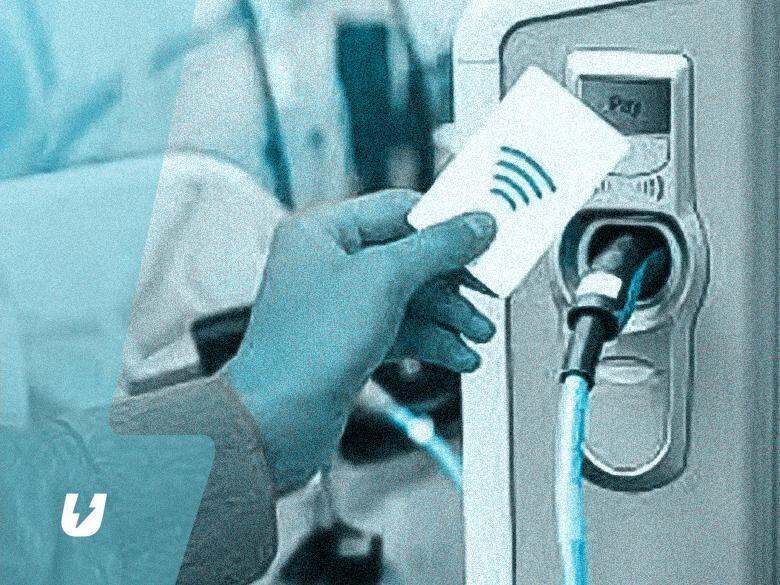Electric vehicle (EV) sales are taking off in the UK. Environmental concerns, social pressure, and the government’s announcement that new petrol and diesel car sales will be prohibited in 2030 have prompted many drivers to consider going electric.

Battery technology advancements have dramatically increased the distance EVs can travel between charges. Electric cars are becoming viable alternatives to petrol and diesel-powered vehicles for many people especially considering the anticipated lower operating costs.
The UK is aggressively rolling out its plan to have fully electric vehicles by 2035. It includes strategies for charging stations, subsidies, and grants.
With so much anticipation for electric vehicles, let’s learn about one of the basic things of having an electric car–charging!
Charging Your New EV
So you got your new electric car. You test it, drive around with it, and now it’s time to recharge. It’s time to fuel up so you can use it again.
While charging an electric vehicle is a bit more complicated than filling up your petrol tanks, for now, this will soon change.
However, the main concern right now is where you charge. Let’s go through that first.
Where To Charge?
The UK has envisioned creating the best EV infrastructure in the world. There are a lot of grants and subsidies created by the government to ensure that citizens, businesses and even property owners get engaged throughout the country.
There are four locations where you can charge your EV: home, work, commercial areas, and public service stations. You may need to bring your charging wire with you at times, though. Most EV drivers connect to a charging station every time they park to keep batteries charged.
Most EVs are parked for hours outside of homes or businesses. This is the ideal time for electric cars charge the battery to have a full ‘tank’ whenever you need it. Unfortunately, charging using a standard domestic power supply will take longer.
Home stations are there for personal use. However, not everyone in the UK can install chargers in their home for various reasons. Some homes don’t have parking areas or garages. Other properties only have common parking areas with EV chargers installed for communal use.

The government gave subsidies and grants to create charging stations in areas like common parking lots for household use. These stations allow households with no parking or use shared parking to have charging stations within their reach.
Many work areas also have common charging stations in their own property’s parking lot or building. These stations allow employees to charge their EVs while working. After work, they go back to their fully-charged cars, ready to go.
Public places like parks and groceries give you quick charging services as an incentive. They understand that you need to recharge your EV while staying there to shop or relax. The government is looking to expand charging station locations across the whole country. It has approved a budget of about £3.5 billion over the next 5-10 years to create a vast network of public charging stations.
Service stations are like the newer petrol stations. These are business establishments dedicated to charging your cars. They allow you rapid charging at a cost and give you the chance to travel long miles and give you more time on the road.
Three Kinds Of Chargers
There are three kinds of chargers for EVs- Slow, fast and rapid. By their distinctions alone, you would already grasp what kind of chargers they are.
Slow chargers are typically set up at home or in office parking lots where you can stay for hours in between charges. Slow chargers take about 6-12 hours, depending on your car.
However, in many cases, especially if you are on the road, time doesn’t afford you to charge an ev slowly. If you’re on a lot of stops and your car cannot go far on a single charge, the solution is in public hubs and charging stations where they have fast or rapid chargers installed.
Fast and rapid chargers can be located in charging stations, supermarkets, charging hubs, and other places where you are likely to stop and go.
Rapid chargers charge with a higher power level, i.e. at a faster rate.

Locations, where rapid chargers are available most likely, have businesses or offices surrounding them. Think of it as the electric “petrol” station where you just fill up and go with stores for coffee, snacks, and a mechanic standing by.
The UK is also encouraging businesses to invest in commercial charging stations. EV charging hubs are also being developed to boost demand for electric vehicles and create businesses in locations where charging stations are available.
Now that you know where to charge and what chargers there are let’s discuss how to charge in different locations:
Charging At Home
In order for you to charge your car at home, you would need to install a charging point in your parking area. You can technically just plug your EV in your regular 3-pin plug and outlet right in your own home. However, manufacturers recommend that you plug into EV-dedicated chargers. EV chargers have a voltage regulator. Most chargers can also detect if your car is at full capacity.
You need to have a home charging port placed where you park your electric car if you want to charge it at home. You can utilise a supply cord for a 3-pin plug socket as a backup if you need to plug in a standard socket.

Installing EV Home Chargers
Do not attempt to install an EV charger yourself unless you are an electrician with prior experience. Always choose an experienced and qualified installer.
The cost of installing your own EV charger is not that hefty, especially with government grants for charging stations and car purchases. Not including charge point prices, the average installation cost is about £400 and may go as high as £800. These costs depend on the location and models of actual chargers to be installed.
No planning approval is required for the installation of wall-mounted electric vehicle charging outlets in areas lawfully utilised for off-street parking. The electrical outlet must be no more than 0.2 cubic meters in size and must not face or be within two meters of a highway.
A full charge is also a lot cheaper than filling up your diesel car. The average cost per full charge of your electric car is about £6. The cost depends on the actual power your car needs. Still, this is far cheaper than filling up a petrol or diesel vehicle.
On-street Residential Parking Scheme
The government has also implemented ORCS or On-street Residential Parking Scheme to allow residential areas to have their own charging stations where they park their car. Most homes park on the street or in common areas for their residences in the UK, especially in busy districts. Most homes in these areas don’t have a built-in parking area, thus the need for on-street parking.

Charging units are encouraged to be built in these locations so homeowners can charge their cars.
Charging In Stations
The government is fast-tracking its goal of creating public and commercial stations nationwide. So far, there are about 14,000 to 15,000 stations in the country, with about 40% installed in London.
The Department for Transport says this is far from enough, and it needs to hasten the creation of more charging stations to be ready for the surge in electric cars.
It is projected that there will be at least 32 million EVs by 2030. The government needs to create about 2 million chargers by the same date. The ministry encourages businesses to develop commercial charging stations giving owners subsidies and grants so they can reach this goal. According to the ministry’s plans, these commercial stations should be in sync with public stations being created by the government.
Public and commercial charging stations allow EVs to lengthen their travel time and give their cars more range. The average distance an electric car makes is about 150 miles. This capacity would be enough for the round trip of a typical employee going to and from work.
Chargers need to be installed at varied points for electric cars to go further along that distance. Thus, the need for more charge points and hubs.
Park, Charge And GO
Charging in public or commercial stations is as easy as filling up your tank.
There are numerous free electric car charging stations in the UK, which are frequently found in supermarkets, shopping malls, public car parks, hotels, and, on occasion, service stations.
Some places, such as retailers or supermarkets, require you to make a purchase before you can charge your EV. Some have time constraints as well. Although most of these locations feature rapid chargers, time constraints may not be as relevant.

Accessing Public Or Commercial Charging Points
There are at least four ways in order for you to access charging points in your area.
Plug And Play
Most public chargers don’t need anything for you to use them. You simply park, plug and wait just like in any petrol station. All you need to do is pay for the electricity that you use. The UK has even approved a large budget for the rollout of free charging stations for consumers to use.
App-based Locators And Chargers
Apps that identify your nearest charging station are a must-have for electric car drivers. Simply open your phone to be routed to the nearest charging station. Some apps have
more than 1700 chargers in their network and are free to use. The app allows you to locate the charger in the network nearest you.
Some others require subscription fees before allowing you to charge in their own network of charge points stations.
RFID Card-based Chargers
Various EV charging station networks can be registered and paid for using radio frequency identification (RFID) cards. RFIDs, however, are not necessarily needed for most charging stations, especially the ones that are free. They are most popular because of their ease of use and are not dependent on phone signals.

Contactless Card-based Chargers
Contactless payment has also allowed easy payment in charging stations. Most stations don’t allow payment in cash. You either sign up in their app, have a dedicated RFID or pay via contactless payment with your debit or credit cards.
Other Things To Consider On EV Charging
With all things said, certain precautions are needed when you charge your car.
Do Not Overcharge
Overcharging your batteries reduces their life span. An app that detects your car battery and lets you to set an alarm to turn off your car automatically is a very useful tool. This also helps you to accurately monitor your battery life, especially during nighttime charges when you’re most likely slow charging.
Do Not Charge Everynight
When you’re at home, slow charging at night is excellent. It is not required, however, to charge every night. This process reduces battery life, especially when the batteries aren’t completely depleted. Charge only when absolutely needed.
Charging your electric car may not be as easy as ABC at first. But, as in many things, familiarizing yourself with the essentials is always beneficial. Moreover, your batteries require proper care and diligence for them–and your car–to last longer.
The EV industry is fairly new. It’s beneficial to learn and research this developing technology. To know more about electric vehicles and EV charge points in the UK, visit our website!
Dive deeper into the topic and expand your knowledge. Read more here: How to Charge an Electric Car at Home UK

